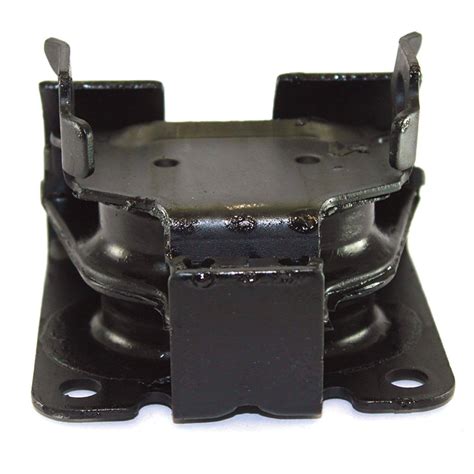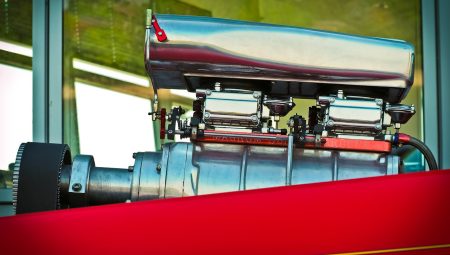Learn about passenger engine mounts, their importance, signs of failure, replacement process, and tips for choosing the right one for your vehicle.When it comes to the smooth operation of your vehicle, the passenger engine mount plays a crucial role that often goes unnoticed. This essential component is responsible for securing the engine to the chassis, minimizing vibrations, and ensuring a quiet ride. Understanding what a passenger engine mount is and why it matters is key to maintaining your vehicle’s performance and longevity. In this blog post, we will explore the significance of engine mounts, the warning signs that indicate a failing mount, and the steps to effectively replace one. Additionally, we’ll provide guidance on how to choose the right engine mount for your needs. Whether you’re a car enthusiast or an everyday driver, this comprehensive guide will equip you with the knowledge to keep your vehicle running smoothly.
What is a passenger engine mount?
A passenger engine mount is a crucial component in a vehicle’s engine system designed specifically to secure the engine to the vehicle’s frame or chassis, ensuring that it remains in place while allowing for limited movement to absorb vibrations and shocks, which ultimately enhances the comfort and safety of the ride.
These mounts are typically made from rubber or a combination of rubber and metal, engineered to provide both flexibility and support, which helps prevent undue stress on the engine and other mechanical components, and they play a vital role in minimizing engine noise and vibration that may otherwise be felt in the passenger compartment.
In summary, understanding the purpose of the passenger engine mount is essential not only for vehicle maintenance but also for ensuring a smooth driving experience, as these mounts contribute significantly to engine stability and the overall performance of the vehicle.
Importance of engine mounts
The engine mount plays a pivotal role in providing stability and support to the engine within the vehicle, as it secures the engine to the chassis while simultaneously absorbing vibrations, which contributes significantly to a smoother driving experience. This component not only aids in minimizing noise pollution but also ensures that the engine remains properly aligned with the transmission, thus promoting optimal performance and extending the lifespan of both the engine and the vehicle as a whole.
Furthermore, a well-functioning engine mount assists in the overall safety of the vehicle; by maintaining the engine in the correct position, it helps prevent excessive movement that could potentially lead to other damages, particularly to vital components such as the exhaust system or even the drivetrain. This is crucial during sudden acceleration or deceleration, where the force exerted on the engine can be significant, and having reliable mounts is essential to withstand such pressure.
Finally, the importance of regular inspection and maintenance cannot be overstated, as faulty engine mounts can lead to a cascade of issues that affect not only the engine itself but also the handling and comfort of the vehicle, thereby making it imperative for vehicle owners to be aware of the state of their engine mounts so they can preemptively address any concerns that arise, ultimately leading to an enhanced driving experience.
Signs of a failing engine mount
One of the most important components that keep your vehicle running smoothly is the engine mount, which is responsible for securing the engine to the chassis of the car and minimizing vibrations; thus, when this crucial part begins to deteriorate or fail, a number of noticeable signs come into play that should not be overlooked, particularly because they can lead to more severe problems if left unaddressed.
For instance, if you start to notice an increase in excessive vibrations within the cabin, especially during idle or acceleration, it may indicate that the engine mount is no longer effectively absorbing the vibrations produced by the engine, causing them to reverberate throughout the vehicle, which not only leads to an uncomfortable driving experience but can also wear down other components over time.
Additionally, unusual noises such as clunking or banging sounds when accelerating or making turns can serve as a strong indicator of a failing engine mount, as these sounds often occur when the engine shifts position due to a weakened mount, ultimately leading to potential alignment issues and other mechanical fa
Replacing a passenger engine mount
When it comes to maintaining the overall performance and safety of your vehicle, one essential component that often gets overlooked is the passenger engine mount, which plays a crucial role in securing the engine to the chassis and absorbing vibrations, ensuring a smoother ride. Over time, due to various factors such as wear and tear, exposure to extreme temperatures, and regular engine vibrations, these mounts can deteriorate, leading to potential issues in handling, noise, and alignment, which raises the need for timely replacement to preserve the functionality and safety features of your vehicle.
Before executing the replacement of a passenger engine mount, it is vital to gather the necessary tools and materials, and understand the procedure involved; typically, you will need items such as a jack, jack stands, a wrench set, and a replacement engine mount specific to your vehicle’s make and model. Once you have prepared, begin by securely lifting the vehicle, taking care to ensure safety measures are in place, and then carefully remove any components that may obstruct access to the engine mount, such as exhaust pipes or brackets, before proceeding to detach the failing mount from both the engine and the chassis.
After you have successfully removed the old mount, take a moment to inspect the surrounding components for any other signs of wear or damage that could potentially affect the vehicle’s performance; then, position the new engine mount in place, aligning it accurately before tightening the bolts securely, which may require a torque specification from your vehicle’s service manual to ensure proper installation. Finally, once everything is back in place and securely fastened, lower the vehicle and take it for a test drive to ascertain that the vibrations are now minimized and the ride quality has significantly improved, indicating a successful replacement of the passenger engine mount.
Choosing the right engine mount
When it comes to selecting the appropriate engine mount, one must consider a myriad of factors that can significantly impact both the performance and lifespan of the vehicle, as the engine mount plays a critical role in securing the engine securely to the vehicle’s chassis while simultaneously dampening vibrations and reducing noise that may otherwise transfer from the engine to the cabin.
One essential aspect to take into account is the material of the engine mount, with options ranging from rubber to polyurethane and even hydraulic types, as each material offers distinct advantages; for instance, rubber engine mounts are typically favored for their ability to absorb vibrations effectively, whereas polyurethane engine mounts provide increased rigidity and resistance to wear and tear, making them suitable for high-performance applications.
Additionally, it is crucial to ensure that the engine mount is compatible with the specific make and model of your vehicle to avoid premature failure or poor performance, and consulting with experts or conducting thorough research helps in identifying the right specifications, dimensions, and load capacities that
Frequently Asked Questions
What is a passenger engine mount?
A passenger engine mount is a component that secures the engine of a vehicle to the chassis, reducing vibrations and noise while providing stability.
What are the signs of a failing engine mount?
Signs of a failing engine mount include excessive vibrations felt in the cabin, unusual noises when accelerating or idling, misalignment of the engine, and visible wear or damage on the mount itself.
How often should engine mounts be replaced?
Engine mounts should typically be inspected during regular maintenance and replaced every 5 to 7 years, or sooner if signs of wear are present.
Can a bad engine mount affect vehicle performance?
Yes, a bad engine mount can lead to poor vehicle performance, including reduced acceleration, increased noise, and steering issues due to engine misalignment.
What materials are engine mounts typically made from?
Engine mounts are commonly made from rubber, metal, or a combination of both, which allows them to absorb engine vibrations while providing support.
Are there different types of engine mounts?
Yes, there are several types of engine mounts, including hydraulic mounts, solid mounts, and soft mounts, each designed for specific applications and performance needs.
Can I drive with a broken engine mount?
It is not advisable to drive with a broken engine mount, as it can lead to further damage to the engine and chassis, as well as pose safety risks.





